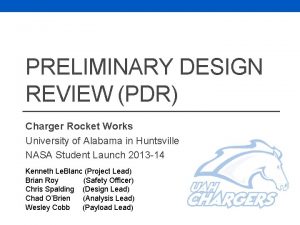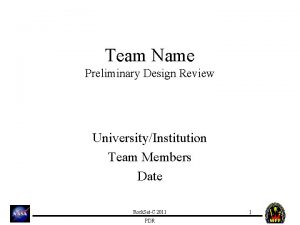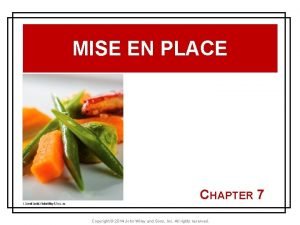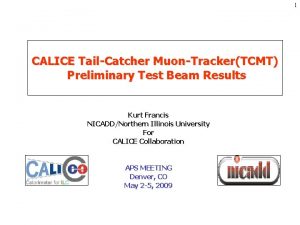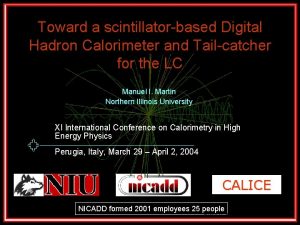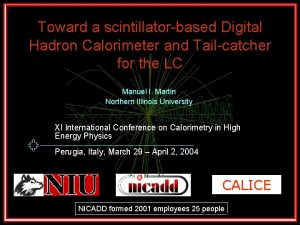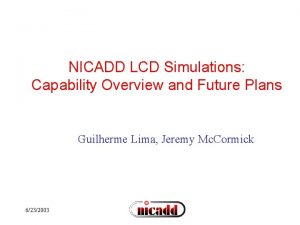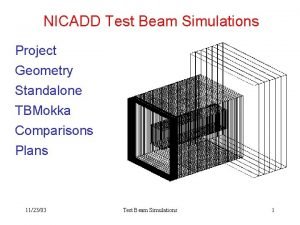TAILCATCHER Some Ideas and Preliminary Design For NICADD







- Slides: 7

TAIL-CATCHER Some Ideas and Preliminary Design For NICADD by Manuel I Martin 9/10/2003

2 Basic Constrains • Dimensions 1500 x 500 mm 3 • Absorber material • Iron • Stainless Steel • Brass • Active Material • Extruded Scintillating Polymer • Number of Layers • At least five • Photo detector • Multi-Channel PMT (16? ) • It should be possible to insert/remove Individual layers. Manuel I Martin 9/10/2003

3 About the Active Layers The Active Layers are Formed by Parallel Extruded Bars with an 1 mm Ø WLSF running the length of the bar and centered on its cross -section. The cross-section is rectangular and 5 X 100 or 5 X 50 mm 2. Extruded bars in even and odd layers are positioned at 90. It would be desirable to be able to insert/remove individual bars. It is desirable to read both ends of the WLSF to increase efficiency. We must have the maximum light output possible. Manuel I Martin 9/10/2003

About the Absorber Layers Regardless of the material used for the absorber, the requirement to be able to insert/remove individual layers presents a real challenge. The weight of a single absorber layer made of iron will be between 1, 412 and 1, 766 Kg. Even without the need for in-place insertion/removal of individual layers, the construction of the tile-catcher requires some ingenuity and thought. Manuel I Martin 9/10/2003 4

SUGGESTIONS to improve light output • Use cross-section of 5 x 50 mm. • Use two WLSF with mirrored and slightly overlapping ends. • Use ‘cuts’ ~22 mm deep and ~. 5 mm wide every 50 mm at each ‘edge’ of the extruded bar. This ‘simulates’ tiles around 50 x 50 mm 2 and a rough modeling provides a gain of 2 to 4 in light output. Tests of this configuration are simple and straightforward. Manuel I Martin 9/10/2003 5

6 SUGGESTED architecture • Six active layers with 30 extruded bars and 60 WLSF read by two 32 channel PMTs • Use the geometry suggested before for the extruded bars • Odd active layers with horizontal (vertical) bars • Even active layers with vertical (horizontal) bars • Five absorber layers made of iron or brass sheets with a total thickness per layer of 90 mm • Ten ‘gaps’ 2 mm wide between active and passive layers • Twelve 32 channel PMTs located at the edges of the active layers Manuel I Martin 9/10/2003

7 CONCLUSIONS • NICADD can take the responsibility of building the “Tail Catcher” using our expertise in • extruding scintillating material • developing geometries which improve the light output • using techniques suitable to mass production • NICCAD will need the collaboration with the ME Dep. (or equivalent institution) to solve the mechanical problems of the infrastructure and construction of the “Tail Catcher” Manuel I Martin 9/10/2003
